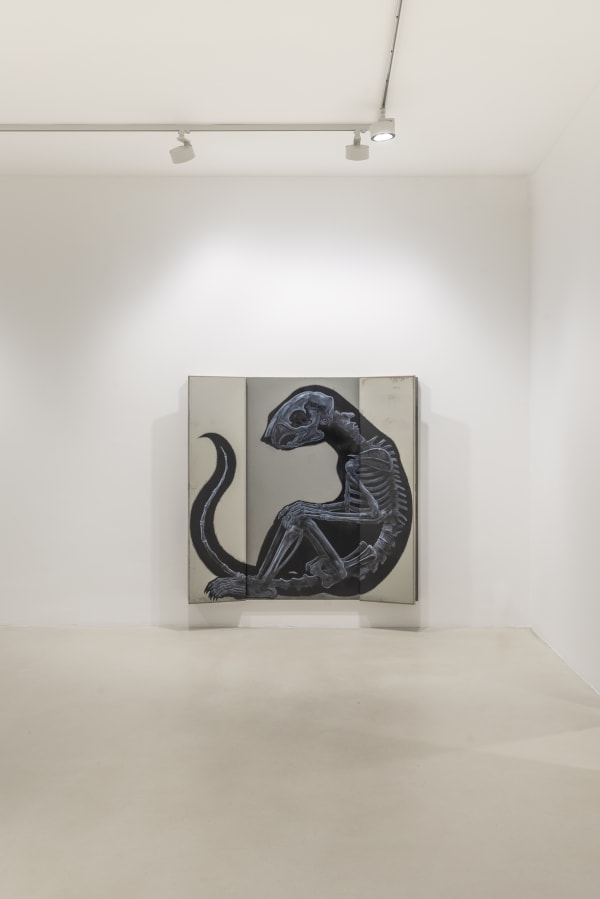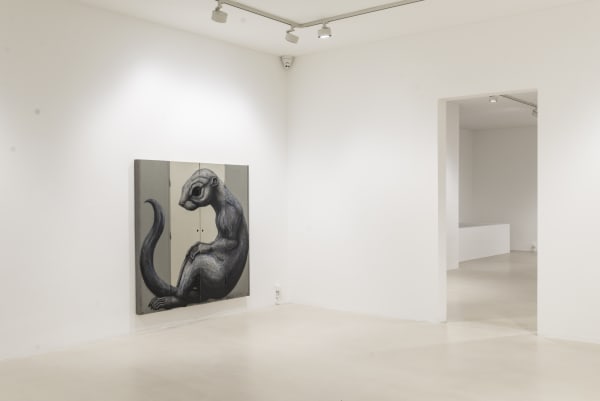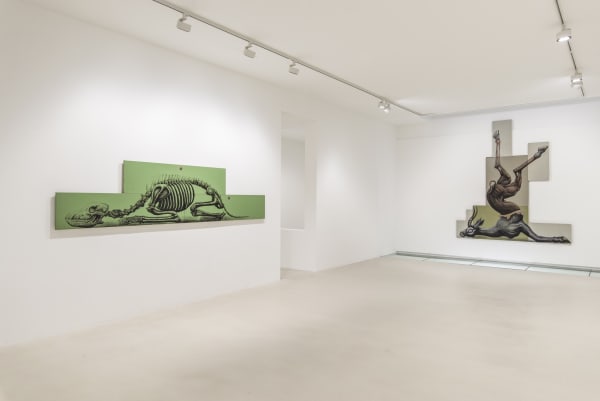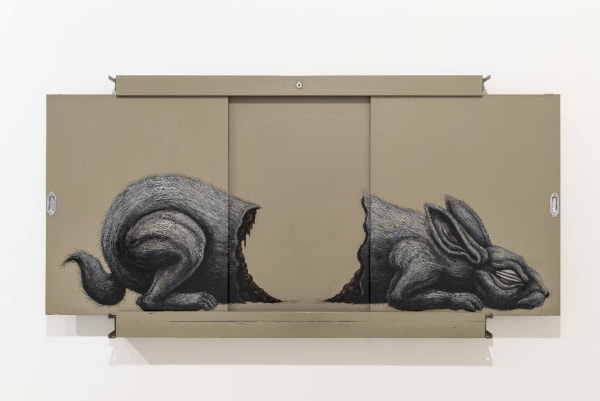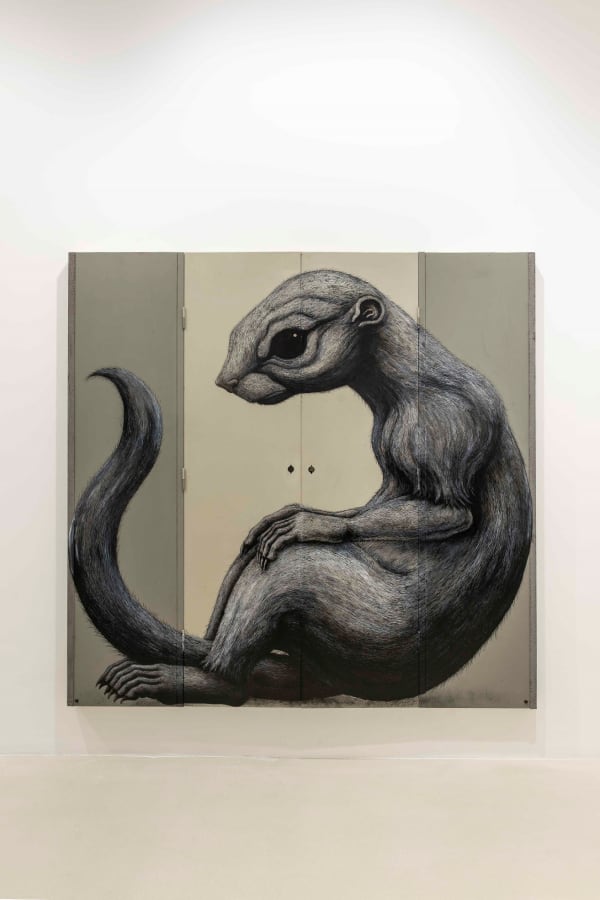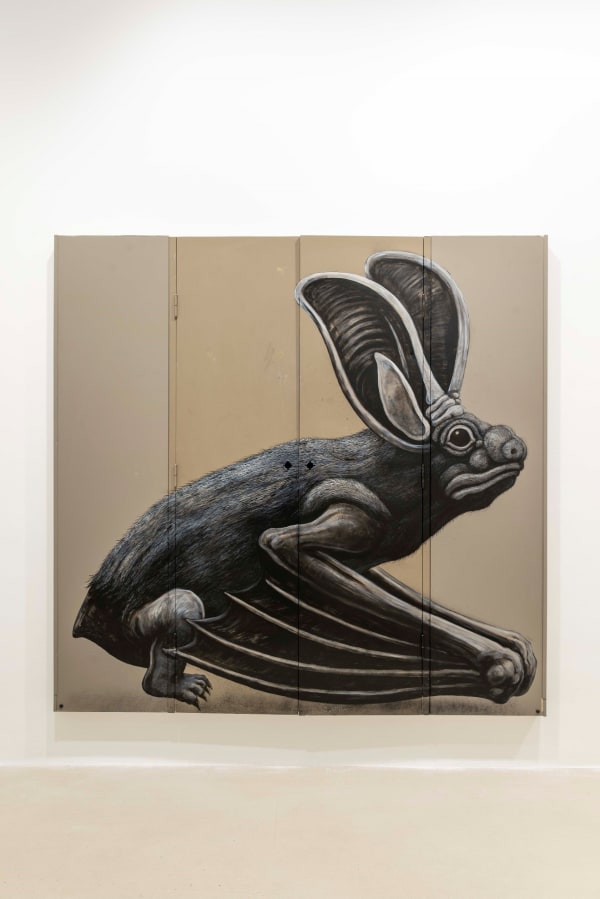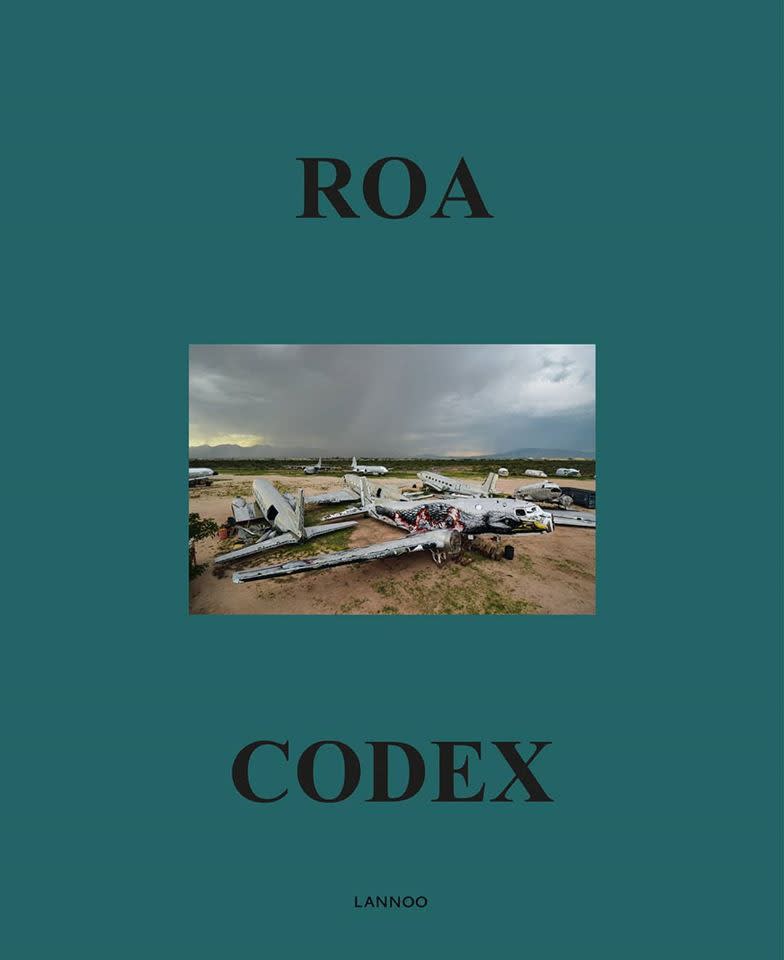ROA, born in Ghent, Belgium, is considered to be one of the most influential contemporary mural artists of our times and his public works on buildings and walls across the world where photographed countless times. His characteristic style – black and white paintings of endangered or extinct animals, sometimes including the skeleton or colourful internal organs – immediately catches the eye of the passer-by. The meticulously detailed paintings and their enormous scale, sometimes up to 50 meters high, aid the artist’s ambition: to remind the modern man in his day-to-day life of the nature from which he originated.
This time, contrary to his previous exhibition in which he used old church floors, ROA only used recycled metal as his ‘canvas’. This was a very deliberate symbolic choice. Metal is an industrially made material, for which nature was transformed with brute force to create a new, cold product. The metal panels come from old cupboards from the Belgian army, schools, the Belgian railways, power plants,… and refer to the bureaucracy and institutions that serve to keep society in check and design it in an ‘efficient’ way.
The title of the exhibition La Bête Humaine (the human beast) is based on the eponymous book by Emile Zola from 1890. The story talks about an obsessive man who can’t control his murderous and sexual urges and is completely set against the backdrop of the French railways. The mechanical aspects of the train on which the whole story evolves, the engine driver, the train tracks,… are a symbol for the raging industrial revolution of those times. Despite evolution, the beast in man proves to be irrepressible in this story.
The positivism of those times annihilated all Romantic ideals: the world became demystified. God, the metaphysical, nature as a mystery,… were replaced by a strict empiricist approach to The Facts. The natural sciences turned upside down by Darwinism had shattered all ‘illusions’. Man is an ape, not a child of Adam and Eve. We are the result of natural selection, not of God’s plan. We are mercilessly mortal, our soul will not be saved, nor will we be punished for our selfishness. The only one we ultimately owe any justification is our reasonable self. In fact, the only thing that matters is survival of the fittest. Evolution of all animal life revolves around eternal adaptation, one species adapts to the other and vice versa. Life turns out to be a race without finish line in which everything revolves around one’s own protection against extinction.
The bunker installation (2019) in the gallery’s basement is the ultimate symbol of human protection: like the shield of the ArmadilloTolypeutes (2019) man arms himself against the threat – this time self-inflicted – of total destruction. The development of mass weapons in the race for power and self-defense, has spun so out of control that human kind is forced back into the position of a caveman hiding in his cave. The adagio ‘knowledge is power’ and a blind progress optimism led to creations which reduced us back to frightful, powerless creatures.
Today, man is anxiously trying to protect himself against a new threat: the loss of identity, the last bastion of certainty, the last ‘essence’. Identity became the new anchor after the loss of our relationship with God. Now we believe only in our self and invest in the relationship with the image of our self. Stubbornly trying to defense its own borders and culture is a clear demonstration of the desperate man clinging to old certainties.
The main principle of the Enlightenment: man as a thinking, rational creature – and therefore superior to all animals: the apex predator or “Naked Ape” – being the source for a new, clear future bearing more freedom and humanity, turns into its opposite. Man wanting to rule over nature by controlling it with the power of his reason and putting himself above animals by going so far as to industrialize human food production, becomes the victim of its consequences. He becomes the slave of his own instrumental rationality, his natural habitat becomes unlivable and he is alienated from himself.
Today’s human beast is the selfish, short-sighted, self-indulgent creature that doesn’t understand its own nature despite the scientific knowledge.
Maybe art can enlighten him. Russian writer Tolstoy certainly thought so: he saw art as the ethically necessary opposite of logics and science as it deals explicitly with feelings and intuition.
We sometimes wonder about the essence of art, whether or not art is a genesis in our historical existence, or under which conditions it can be. ROA poses that art evokes the same feelings of wonder within man as does the wild virginity of nature. Our mind gets so permeated with the image that we seize to have any attention for anything else. It’s this kind of ecstatic loss of control which permits us to be completely engulfed by the experience causing our critical abilities, intrinsically human, to make way for empathy. “Exploration of nature, more specifically – of the animal world, can lead to increased empathy. It teaches you something substantial about how one should live a good life”. (ROA)
Lauren Wiggers, 2019


